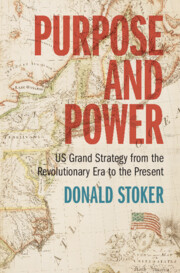Book contents
- Purpose and Power
- Purpose and Power
- Copyright page
- Dedication
- Contents
- Figures
- Maps
- Abbreviations
- Thinking about Grand Strategy in Peace and War
- Part I From Backwater to Great Power
- Part II From Great Power to Superpower
- 7 Stepping upon the Global Stage, 1913–1921
- 8 The Interwar Interlude, 1921–1939
- 9 Moving Astride the World: The Second World War, 1939–1945
- 10 The Hot Peace and the Korean War, 1945–1953
- 11 The Hot Peace: The Eisenhower, Kennedy, And Johnson Years, 1953–1969
- 12 The Vietnam War, 1961–1969
- 13 Détente and Defeat: Nixon, Ford, and Vietnam, 1969–1977
- 14 For Want of a Vision: The Carter Years, 1977–1981
- 15 Winning the Hot Peace: Reagan’s Great-Power Competition, 1981–1990
- Part III The Post–Cold War World
- Part IV Retreat and Defeat
- Acknowledgements
- Notes
- Index
8 - The Interwar Interlude, 1921–1939
from Part II - From Great Power to Superpower
Published online by Cambridge University Press: 11 January 2024
- Purpose and Power
- Purpose and Power
- Copyright page
- Dedication
- Contents
- Figures
- Maps
- Abbreviations
- Thinking about Grand Strategy in Peace and War
- Part I From Backwater to Great Power
- Part II From Great Power to Superpower
- 7 Stepping upon the Global Stage, 1913–1921
- 8 The Interwar Interlude, 1921–1939
- 9 Moving Astride the World: The Second World War, 1939–1945
- 10 The Hot Peace and the Korean War, 1945–1953
- 11 The Hot Peace: The Eisenhower, Kennedy, And Johnson Years, 1953–1969
- 12 The Vietnam War, 1961–1969
- 13 Détente and Defeat: Nixon, Ford, and Vietnam, 1969–1977
- 14 For Want of a Vision: The Carter Years, 1977–1981
- 15 Winning the Hot Peace: Reagan’s Great-Power Competition, 1981–1990
- Part III The Post–Cold War World
- Part IV Retreat and Defeat
- Acknowledgements
- Notes
- Index
Summary
The administration of Warren G. Harding represented a “return to normalcy.” He was followed by two other Republicans, Calvin Coolidge and Herbert Hoover. They all practiced a form of laissez-faire economics, and the US enjoyed a postwar economic boom, except in agriculture, which suffered its own postwar depression before the Depression because of overproduction and the loss of wartime markets. The US did not become “isolationist” during this period but instead entered its most intense period of international involvement. Secretaries of State Charles Evans Hughes and Frank Kellogg secured the Washington Naval Treaties, formulated the Dawes plan for war debt financial relief, the Kellogg–Briand Pact, and the Locarno Agreement, and the Young Plan. The US also fought a war in Nicaragua. Hoover launched what became known as the Good Neighbor Policy in Latin America, which his successor, Franklin Delano Roosevelt, pursued. The 1929 stock market crash and then the Great Depression began under Hoover’s administration and continued under Roosevelt. Both had little success using government intervention to revive the economy, and Roosevelt’s attacks on business slowed recovery as Cordell Hull lowered US tariffs. Roosevelt’s New Deal greatly expanded the role of government in US life.
Keywords
- Type
- Chapter
- Information
- Purpose and PowerUS Grand Strategy from the Revolutionary Era to the Present, pp. 258 - 293Publisher: Cambridge University PressPrint publication year: 2024

